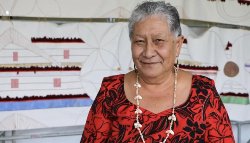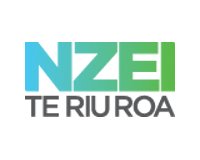The Price Of A Life
St John
the first to care
The Price Of A Life
21 August 2002
An easy-to-use electronic device, smaller than a laptop computer, could soon be saving lives throughout New Zealand.
The Lifepak CR Plus, is to play a crucial role in St John's new nationwide Cardiac Arrest Survival Programme. The device will receive its Asia Pacific launch at St John's Annual Convention in Auckland this Friday, when the Survival Programme will also be launched.
Key characteristics of the Lifepak CR Plus are that it places the power to restart hearts within the reach of everyday people and that it can save lives even before the arrival of an ambulance.
St John plans to market the device for emergency use in public places, including shopping malls, airports, sports stadiums, sports clubs and large corporate premises. A further aim is to encourage local fundraising so as to spread the availability of the new technology, particularly in rural areas.
The device is the most advanced example yet of an AED (Automatic External Defibrillator). AEDs are used to deliver a controlled electric shock through the chest in cases of ventricular fibrillation, the most common form of cardiac arrest. Cardiac victims have a 70% chance of successful resuscitation if defibrillated within the first minute of arrest. With each subsequent minute, the chance of success drops by up to 10%.
"There are around 3,000 cardiac arrests each year in New Zealand and just five out of every hundred survive. Of all the factors which determine survival, the most crucial is the time between arrest and defibrillation," says Tony Smith, Chief Medical Advisor, St John Northern Region.
"Survival rates have declined continuously since 1991. It's significant that, during the same period, denser traffic and more emergency call-outs have progressively increased the time required for an ambulance to reach the scene of a cardiac arrest.
"To some extent, we've been able to counter this trend by reducing the time between the ambulance's arrival and the start of defibrillation by the ambulance crew. But we've reached the limits of what we can achieve simply through being efficient. We must now concentrate on what can be done before the ambulance arrives," says Dr Smith.
"A separate but related issue is a steep decline in the numbers of people willing to perform CPR procedures on cardiac arrest victims. CPR is not a substitute for defibrillation. However, the absence of CPR places an even higher premium on ensuring defibrillation takes place as quickly as possible," he adds.
Weighing-in at just 2 kg, the Lifepak CR Plus is both less cumbersome and more user-friendly than any of its predecessors. The combined cost of purchasing the AED and being trained to use it comes to $5,000, making it considerably less costly than previous models.
Graham Billings, Health Services & Marketing Director, St John's Northern Region, describes the AED as safe for use by members of the public, including older children because the technology would prevent a shock being administered unless required. The device has clear audio and visual prompts that take users step-by-step through the few simple actions required of them.
"Our ambulances have long been equipped with defibrillators. But we're behind parts of Europe and North America when it comes to providing small, low cost defibrillators which can be used by the general public. This has to change because, in addition to the problem of urban traffic congestion, ambulances can face considerable difficulties in quickly accessing many of our rural areas.
"Apart from encouraging companies and organizations to purchase an AED for use on their own premises and providing them with training, we'll be persuading St John's network of area committees to raise funds for the siting of defibrillators in places where this would not otherwise be viable," he says.
Graham Billings adds that last month's launch of the Wellington Lifesaver Trust demonstrates the readiness of New Zealanders to work together in providing access to defibrillators at local level.
"Although the new AED is less costly than any of it's predecessors, there may still be decision-makers in areas used by the public who resist the thought of spending $5,000. They seriously have to ask themselves what is the price of a human life?
"Overseas, there are towns and rural areas which describe themselves as 'Heart Safe Communities'. A good vision for New Zealand would be to have a 'Heart Safe Country'. Our Cardiac Arrest Survival Programme will be a significant step in this direction," he says.
Reporters please note: St John will launch its Cardiac Arrest Survival Programme at the Sky City Convention Centre, Auckland on Friday August 23, 1-2.45pm
There will be opportunities to photograph/film the Lifepak CR Plus.
Ends


 Braden Currie: Sets Sights On The Ironman North American Championships In Texas
Braden Currie: Sets Sights On The Ironman North American Championships In Texas Whanganui Regional Museum: Historic Wedding Dress Unveiled, A Piece Of Marton’s Heritage
Whanganui Regional Museum: Historic Wedding Dress Unveiled, A Piece Of Marton’s Heritage Donovan Ryan: Local Runner Takes Out Frontrunner Christchurch Marathon
Donovan Ryan: Local Runner Takes Out Frontrunner Christchurch Marathon University of Auckland: Tributes Flow For Much Loved Pacific Leader Melegalenu’u Ah Sam
University of Auckland: Tributes Flow For Much Loved Pacific Leader Melegalenu’u Ah Sam NZEI: Ministry Of Education Cuts Will Disproportionately Affect Pasifika
NZEI: Ministry Of Education Cuts Will Disproportionately Affect Pasifika Day One Hapai te Haeata: Call To Action For Young Filmmakers Against The Backdrop Of Funding Cuts
Day One Hapai te Haeata: Call To Action For Young Filmmakers Against The Backdrop Of Funding Cuts